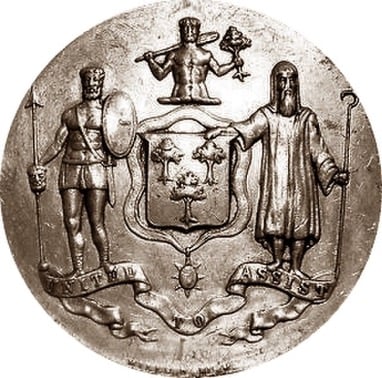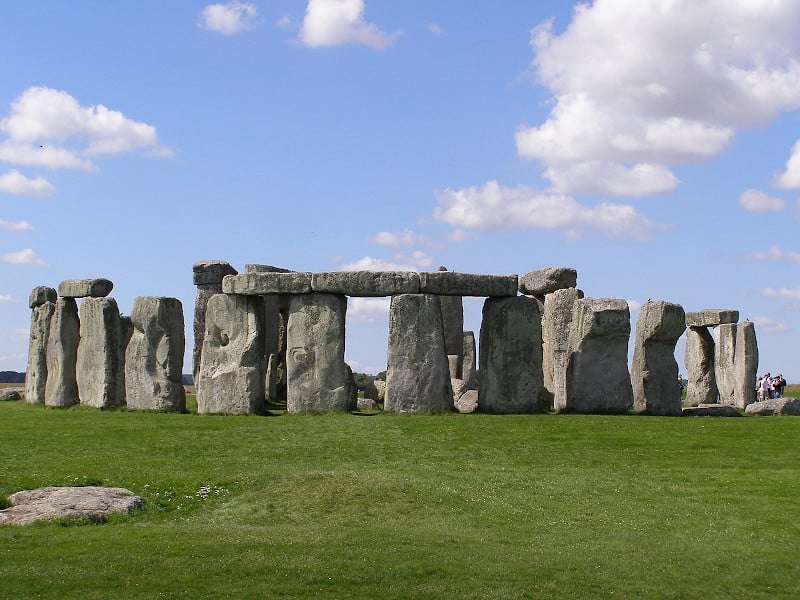
The Origins of Welsh Bardic Scripts
The entire body of ancient Celtic lore and legend was transmitted from mouth to ear, without being written down. The oldest written texts contain material that may have existed in oral form for centuries before being committed to writing. Most ancient written sources contain legends, history, genealogies, and tales of the gods. From written sources alone, it is reasonable to assert that Bardo-Druidic tradition has a continuity from at least the sixth century AD.
The secret and initiated traditions, jealously guarded, were not consigned to writing until much later, if at all. Also, the vagaries of history have meant that what comes down to us from ancient times must, of necessity, be but a fragment of what has existed over time. Many, if not most, texts have come into being and passed away without trace. Only when copies have been made, have texts survived—and then sometimes, only fragmentarily. In addition, transcribers and collators often added material where it was lacking or corrected what they believed to be wrong.
- The Mabinogion: Ancient Welsh Tales Bridging the Celtic Mindset and the Otherworld
- Cerridwen: Mother, Magician, and Crone from Old Welsh Mythology
Historically, however, none of this can be verified. The material emerged into the public domain during the Celtic Revival of the eighteenth century when Druidism and Bardism were of great interest in Welsh, Scottish, and Irish literary circles. The bestseller poems “Fingal” (1761) and “Temora” (1763), which were presented as the rediscovered ancient writings of a Bard named Ossian, triggered off a penchant for ancient Celtic literature and lore—real and otherwise. Ossian had been concocted by the Scottish poet James MacPherson (1736–1796), and the hoax was soon exposed.
Nevertheless, the desire for such romantic Celtiana did not fade away. In London in 1781, Henry Hurle (1739-–1795) created a mystical order on Masonic lines called the Ancient Order of Druids (AOD). A mythos was written for the initiation ritual concerning a love affair during the first-century AD Roman Conquest of Britain. It was between a British Bard called Tacitus Magallas and a princess named Sensitoria Roxiana. The Bard was slain resisting the Romans, and the princess gave birth to a baby named Togo Dubellinus, whom she reared in a sequestered forest. Druids out cutting mistletoe found the baby concealed in a hollow oak tree and brought him up. In adulthood he became the greatest of Archdruids. Numerous other Druidic orders emerged in the nineteenth century, but the AOD still exists at the time of writing. A sigil combining the Greek letters Tau and Delta, signifying Togo Dubellinus, is one of the emblems of this order. Oak leaves and acorns, mistletoe and long-handed sickles (used for cutting it), standing stones, Stonehenge, and the Bardic harp are other emblems that were adopted by many Druidic orders that split from the AOD or formed in other ways. But neither Ogham nor Coelbren appeared in the regalia of these groups.

The United Ancient Order of Druids UAOD Coat of Arms and Motto circa 1834. (Chartix / CC BY-SA 4.0)
In this heady milieu, the Welsh stonemason Edward Williams (1747–1826)—who wrote under his Bardic name Iolo Morganwg, according to the “privilege and usage of the Bards of the Isle of Britain”—is the prime example of this Romantic impulse. He was a key figure in the history of both the Welsh Eisteddfod, which he re-established in his first Gorsedd in London in 1792, and in the development of modern Celtic spirituality, including contemporary Druidry. Over many years, Iolo claimed, he had collected, compiled, edited, and added to texts that he had received both orally and in manuscript from other preservers of Welsh culture. Scholarly commentators noted that much of his material, the Iolo Manuscripts, and other texts, had never been seen or published before, and it was recognized that he must have written most of it himself. It was in these texts that Iolo restated or created the Bardic knowledge that underlies contemporary Druidic teachings. It was a theistic creed, which even though a product of Iolo’s personal vision, was available as a coherent system that was subsequently found to be of spiritual value. The Druids were not seen as Pagan, but as early deists. On a “pilgrimage” to Stonehenge in 1867, having gone there on a special train from Bristol to Salisbury, assembled members of the Ancient Order of Druids were led into the circle by Brother Yeates “bearing an open Bible.”

Stonehenge. (garethwiscombe / CC BY-SA 2.0)
The promoters of the Welsh National Eisteddfod at Llangollen in 1858 “offered a prize of £30, and a Bardic tiara in gold, for the ‘fullest illustration from original sources of the theology, discipline, and usages of the Bardo-druidic system in the Isle of Britain’.” Only one text was received, which came from an unknown Bard called Plennydd. The Bardic judges of the Eisteddfod, chaired by Myfyr Morganwg, deemed the text authentic:




